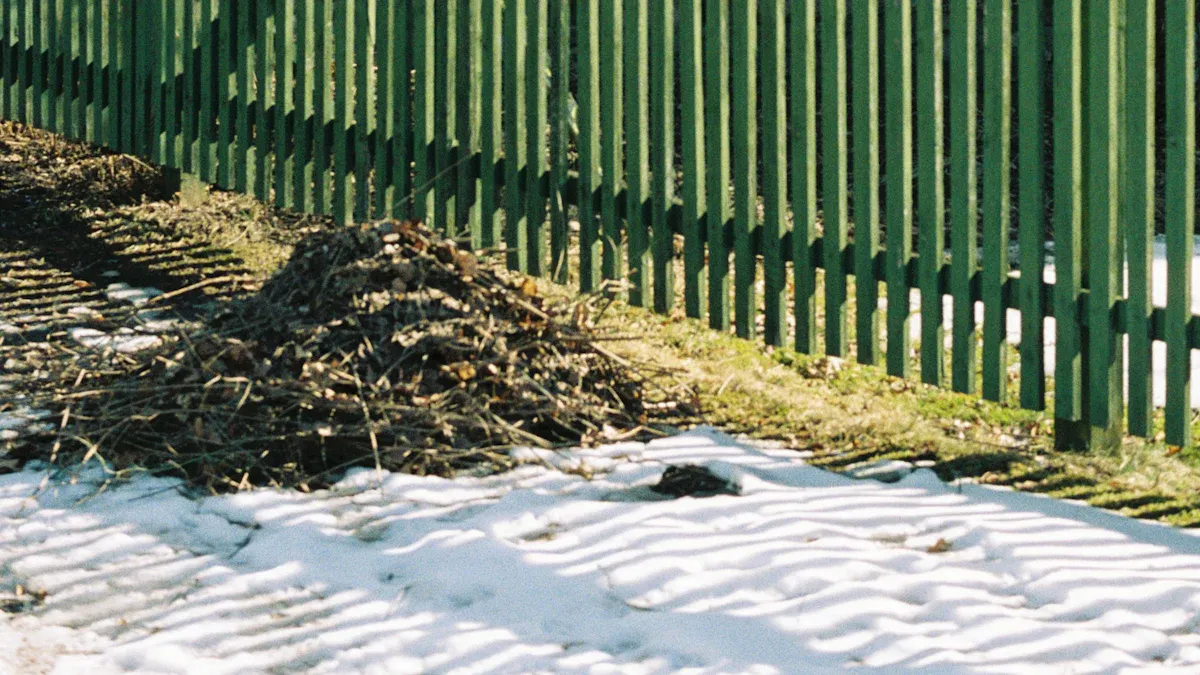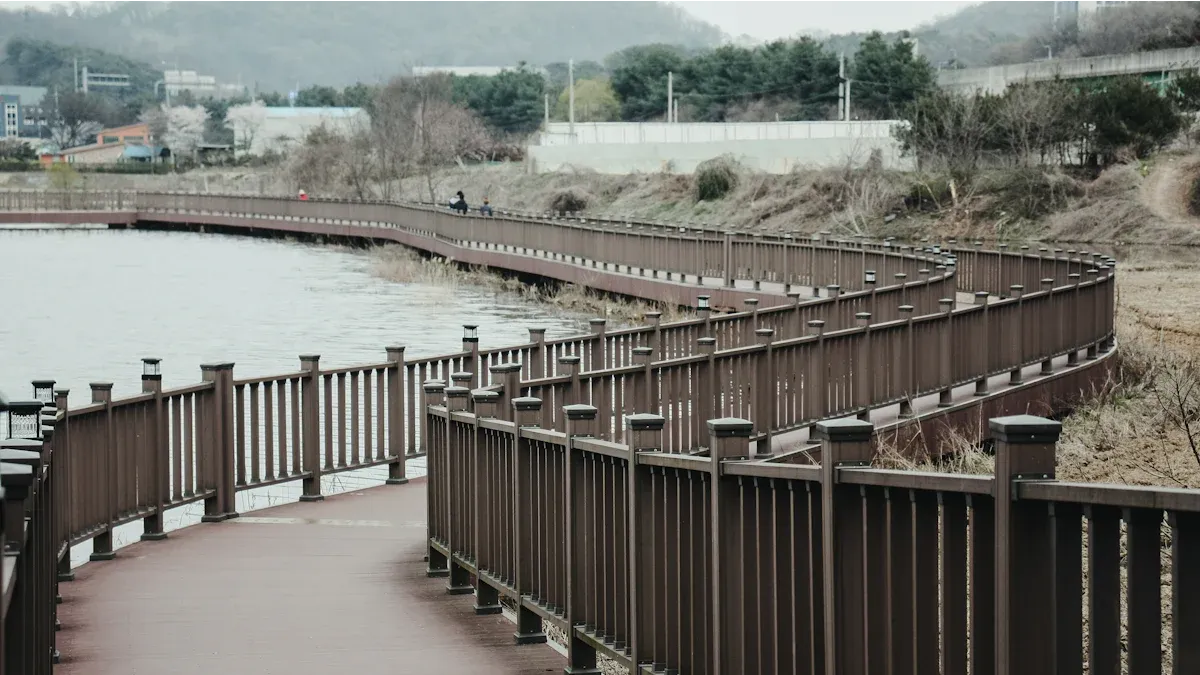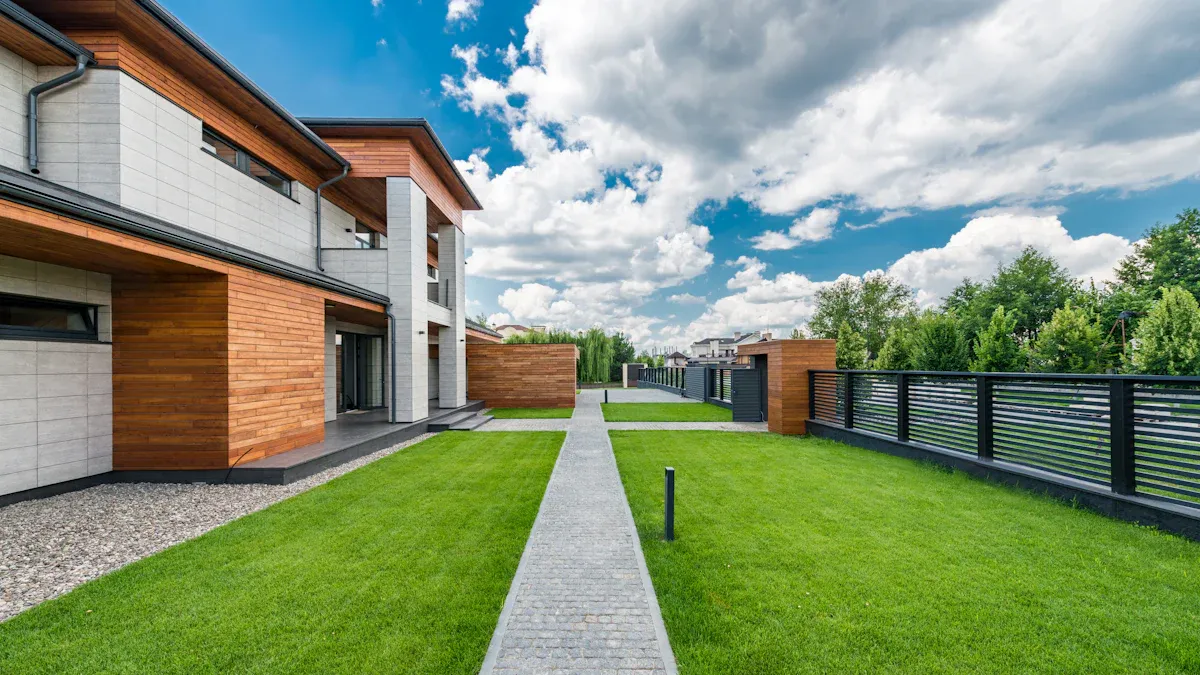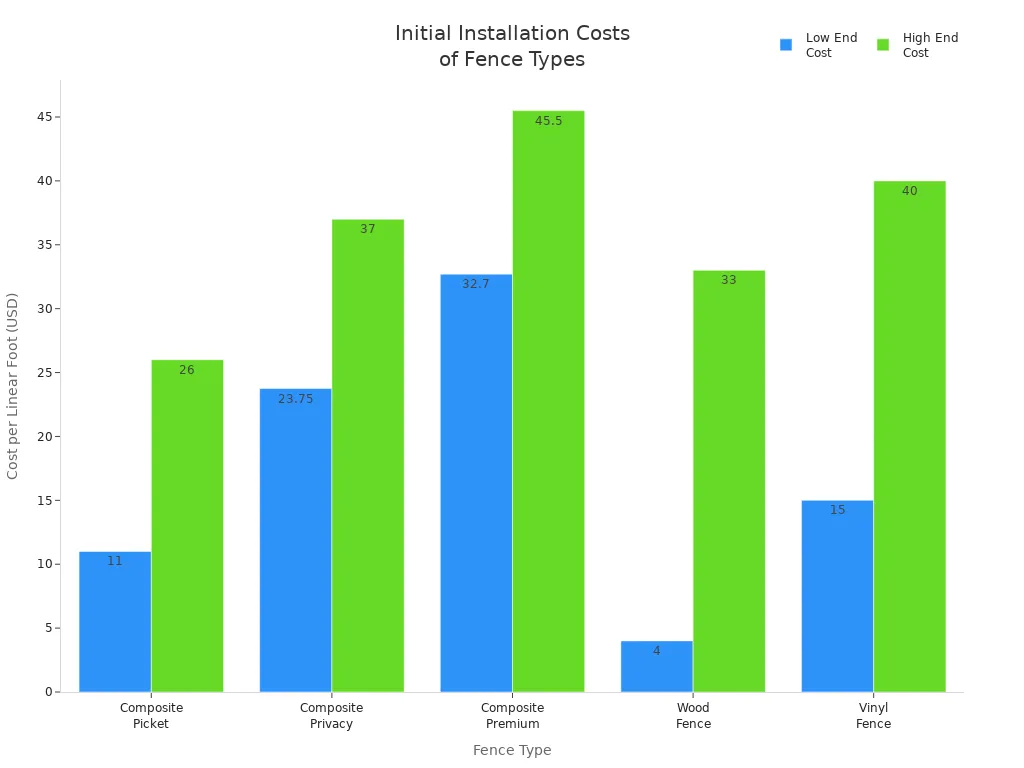
WPC Fence panels give any yard a fresh, modern look while keeping the environment in mind. People choose WPC Wood Plastic Composite for its strength and easy care. A WPC Fence Panel or WPC Fence Panels last through tough weather. Many homeowners even match them with a WPC Wall Panel for extra style.
Key Takeaways
- Wpc Fences userecycled wood and plastic, helping reduce waste and protect forests while offering a strong, eco-friendly option for yards.
- These fences resist weather, pests, and decay, lasting 25 to 30 years with minimal upkeep, saving time and money over traditional wood fences.
- WPC fences come in many styles and colors, install easily with basic tools, and provide long-term value by cutting maintenance and replacement costs.
WPC Fence: Sustainability and Environmental Benefits

Eco-Friendly Materials and Manufacturing
WPC Fence stands out because of its eco-friendly materials. Manufacturers use a blend of recycled wood fibers and plastic polymers. These materials often come from post-consumer or post-industrial waste. No trees are cut down to make these fences. Instead, reclaimed hardwood and softwood fibers are used. The plastic comes from recycled polymers that would otherwise end up in landfills. This process keeps over 500 million pounds of plastic and wood waste out of landfills every year.
Here’s what goes into a typical WPC Fence:
- Recycled wood fibers from responsibly managed forests
- Recycled plastic film and polymers
- No virgin timber or pure plastic
Tip: Choosing a WPC Fence means supporting products that use waste materials and help protect forests.
Reducing Environmental Impact
WPC Fence production uses less energy than traditional wood or vinyl fencing. This means fewer greenhouse gases are released into the air. The use of recycled materials lowers the carbon footprint even more. Unlike wood fences, which often end up in landfills and produce methane, Wpc Fence Panels can be recycled at the end of their life.
Let’s compare WPC Fence to other options:
| Factor | WPC Fence | Wood Fence (Sustainably Sourced) | PVC Fence |
|---|---|---|---|
| Raw Materials Source | Recycled wood fibers and plastic scrap | Sustainably managed forests | Petroleum-based resin |
| Carbon Footprint | Medium, benefits from recycled content | Lower if managed well | High, energy-intensive |
| Recycling Potential | Recyclable into new WPC products | Can be recycled or composted | Limited, often down-cycled |
| End-of-Life Disposal | Non-biodegradable but recyclable | Biodegradable | Difficult to recycle |
WPC Fence also lasts longer than wood, so fewer replacements are needed. This reduces the use of resources and lowers the overall environmental impact.
Supporting Sustainable Landscaping
WPC Fence helps create sustainable yards in many ways. Homeowners and landscapers choose these fences because they last a long time and need little care. There is no need for paints or stains, which means fewer chemicals enter the environment. WPC Fence panels resist rot, decay, and pests, so they stay strong for years.
Case studies show real-world benefits:
- A housing complex in California installed WPC Fence panels. They needed almost no maintenance and stayed durable for years, saving resources.
- A restaurant in Florida used WPC Fence to provide privacy and withstand harsh coastal weather. The fence remained strong and attractive, showing its long-term value.
Note: WPC Fence supports sustainable landscaping by reducing waste, saving resources, and cutting down on chemical use.
WPC Fence: Durability, Low Maintenance, and Modern Value

Weather and Pest Resistance
WPC Fence stands up to tough weather and pests better than most traditional fences. Homeowners often worry about rain, snow, or strong sun damaging their fences. With WPC Fence, those worries fade away. These fences resist moisture, so they do not warp, rot, or grow mold like wood fences do. Even in humid or rainy places, the panels stay strong and look good.
Here are some ways WPC Fence outperforms wood and metal fences:
- No warping, rotting, or mold growth in wet climates
- Stands up to salt spray, termites, and fungus—great for coastal areas
- Handles high winds and impacts without cracking or bending
- UV-resistant, so the color stays bright even after years in the sun
- No rust, unlike metal fences, and no need for painting
A quick look at pest resistance:
| Criteria | Wood Fencing | WPC Fencing |
|---|---|---|
| Pest Resistance | Susceptible to insect damage | Highly resistant to insect damage |
| Durability | Moderate, prone to rot/decay | High, resistant to rot and decay |
| Maintenance | High, needs treatments | Low, minimal maintenance needed |
| Longevity Impact | Frequent repairs/replacements | Long-lasting, minimal pest issues |
WPC Fence keeps yards safe from bugs and weather, making it a smart choice for any climate.
Minimal Upkeep and Longevity
People love WPC Fence because it saves time and money on care. Unlike wood, which needs sanding, painting, or sealing, WPC Fence only needs a quick wash now and then. No special cleaners or tools are needed. This means less work for families and more time to enjoy the yard.
WPC Fence also lasts much longer than wood. Most WPC fences stay strong for 25 to 30 years. Wood fences usually last only 10 to 15 years before needing big repairs or replacement. Vinyl fences can last 20 to 25 years, but WPC Fence often matches or beats that lifespan.
A simple table shows the difference:
| Fence Type | Average Lifespan |
|---|---|
| WPC (Composite) | 25–30+ years |
| Wood Fence | 10–15 years |
| Vinyl Fence | 20–25 years |
Tip: WPC Fence means fewer repairs, less hassle, and a fence that looks great for decades.
Design Versatility and Customization
WPC Fence offers many design choices. Homeowners can pick from several colors and textures, including wood-like finishes and modern patterns. Some brands let you mix and match colors for a unique look. There are also options for decorative panels, horizontal slats, and even laser-cut designs.
Here’s a quick comparison of design options:
| Material | Design & Color Options | Pros |
|---|---|---|
| WPC Fencing | Wood-like look; multiple colors; modern styles | Aesthetic, low maintenance, eco-friendly, resists rot and insects |
| PVC Fencing | Wide range of colors and styles | Durable, low maintenance, weather resistant |
| Steel Fencing | Limited design options | Very durable, secure, pest resistant |
| Traditional Wood | Warm, natural look; versatile designs | Classic style, can be painted or stained |
Some WPC Fence installations even combine composite boards with aluminum posts for extra strength and style. Homeowners can choose fence heights and lengths to fit their yard. This flexibility makes WPC Fence a good fit for homes, gardens, restaurants, and even public spaces.
Cost-Effectiveness Over Time
While WPC Fence costs more at first, it saves money in the long run. There is no need to buy paint, stain, or insect repellent every year. Repairs are rare, and the fence does not need to be replaced as often as wood.
Let’s look at the total cost over 20 years:
| Fence Type | Average Cost (Per Linear Foot) | Lifespan | Maintenance |
|---|---|---|---|
| Composite Fence (WPC) | $35–$65 | 25–30+ years | Low (occasional washing) |
| Wood Fence | $15–$30 | 10–15 years | High (annual treatments) |
| Vinyl Fence | $20–$40 | 20–25 years | Low (minimal upkeep) |

Note: WPC Fence may cost more to install, but it pays off with fewer repairs and less maintenance over time.
Easy Installation and Practical Use
WPC Fence is designed for easy installation. Homeowners and contractors do not need special tools or skills. The process uses galvanized steel posts for strength. Installers dig holes, set the posts, and slide the WPC boards into place. Locking clips keep everything secure. Post caps protect against rain and make the fence safer.
Here’s how the installation works:
- Dig holes for galvanized steel posts (about 25% of post height deep).
- Slide WPC post sleeves over the steel rods and check for level.
- Insert WPC boards into grooves, one by one.
- Use locking clips to prevent movement.
- Cap the posts to keep out rain and finish the look.
This simple system means most people can install a WPC Fence themselves. The fence stays sturdy and safe, even in tough weather.
- WPC Fence stands out as a smart choice for anyone who wants a greener yard.
- It uses recycled materials, lasts for years, and needs little care.
- Homeowners enjoy strong fences that look great and help protect the planet.
- Choosing WPC Fence means supporting a sustainable future.
FAQ
How long does a WPC fence usually last?
Most WPC fences stay strong for 25 to 30 years. They resist rot, pests, and weather, so families enjoy them for decades.
Can someone install a WPC fence without special tools?
Yes! Most people use basic tools like a level, shovel, and drill. The panels fit together easily, so installation feels simple.
Are WPC fences safe for pets and kids?
Absolutely. WPC fences have smooth surfaces and no sharp edges. They do not splinter, so kids and pets stay safe while playing outside.
Penny Director of Wood Plastic Composites Technology R&D With nearly ten years of experience in the wood-plastic composite material industry, from the early optimization of wood-plastic material formulas to the current focus on durability solutions for outdoor scenes, I have always been deeply engaged in the technical direction of “integration of natural texture and industrial performance”. Today, I share industry trends, technical analysis and high-quality product recommendations through blogs, hoping to encourage more people to understand and adopt new low-carbon, durable and environmentally friendly building materials.
Media Contact
Company Name: Ningbo Yida Wood Plastic Technology Co., Ltd.
Email: Send Email
Country: China
Website: https://www.ydwpcfactory.com/
